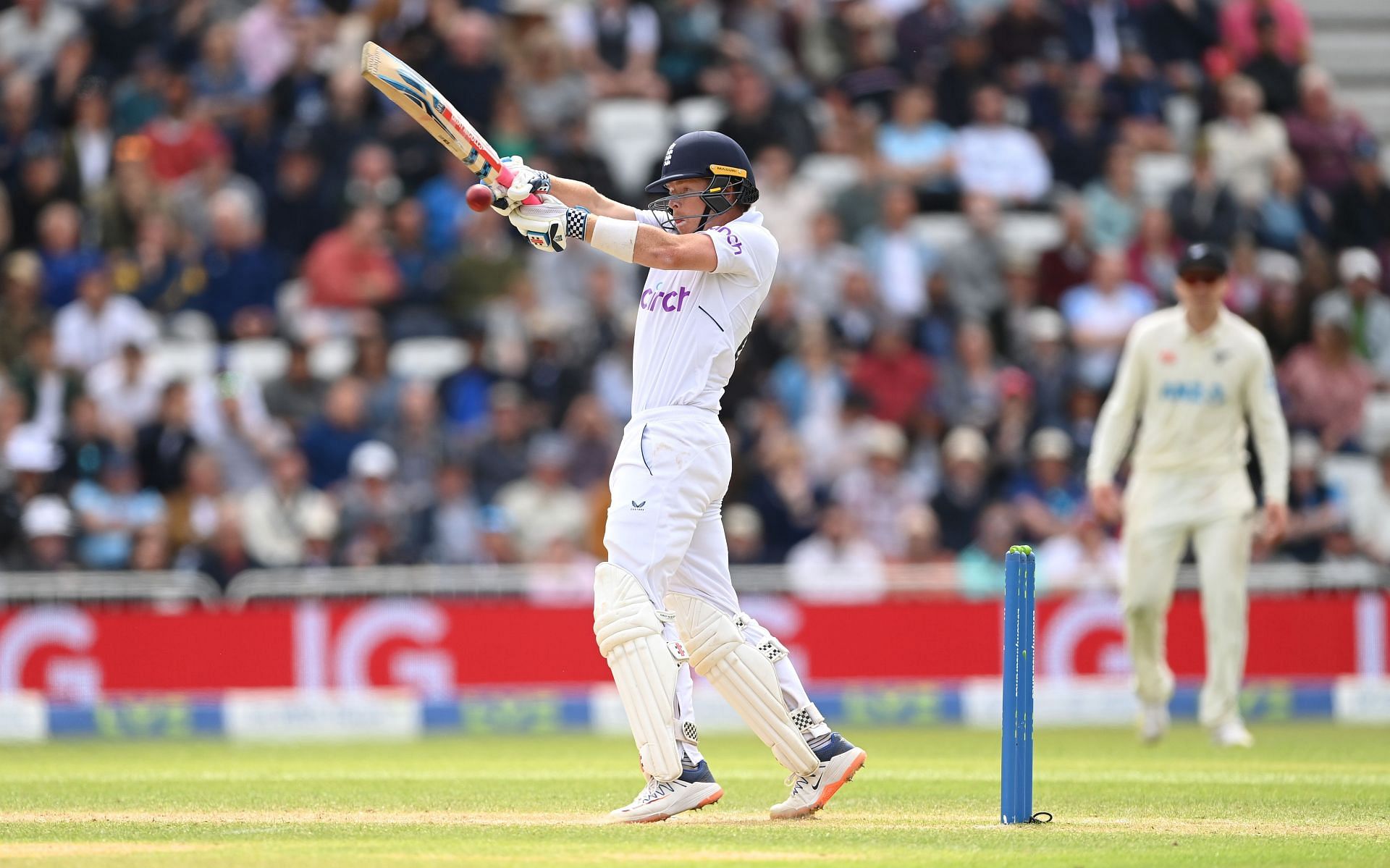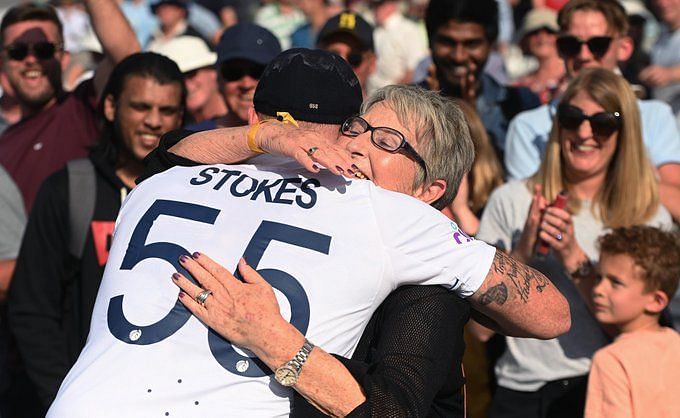
England vs New Zealand: A team is only as good as its captain

Just before the tea break on Day 5 (June 14) of the Trent Bridge Test between England and New Zealand, Simon Doull, on air, asked his partner, Naseer Hussain, a very interesting question. Would there be more forgiveness from the public if England lost the match while attempting an aggressive chase rather than playing for a draw?
The answer was even more interesting, as Hussain, without preamble, answered: "Absolutely".
It was only a year ago that England started their summer of 2021 with a Test series against the same foes, New Zealand. The summer could not have had a better start as cricket had returned to Lord's for the first time since the pandemic and so had the crowd.
However, what had promised to be a grand event ended as a damp squib. New Zealand skipper Kane Williamson made a sporting declaration on the last day, giving the English a target of 273 to chase in 70 overs. It was a move that had surprised quite a few as they required just over three runs per over to chase it.
What followed, however, infuriated some and probably shocked everyone. England's leadership group comprising of two-in-one (head coach and head of selectors) Chris Silverwood and their skipper Joe Root, decided not to go for the target. It was a safety-first approach and not even once did they contemplate just making a dash for the win.
England finished at 170/3 after playing a full quota of 70 overs, and their decisions were met with boos from the crowd as well as from social media. It was a day where they lost a lot of Test cricket fans. It was a day that defined Root's legacy as Test captain.
Change in England management mindset
History does have a habit of repeating itself. On 14 June 2022, it happened again. Albeit, on a different ground. New Zealand set England a target of 299 with a minimum of 72 overs left in the day.
When England's openers walked out to bat, the win-predictor showed an emphatic 61 percent probability for a draw, even after taking into account Dom Sibley's absence from the Test team. England's win probability was mere 19 percent. New Zealand were still favorites, by the barest of margins.
The first over, however, displayed a change in mindset from England's team management. Durham opener Alex Lees punched Tim Southee for three boundaries in the first over and raced to 30 off 32 balls as lunch was called. The intent was clear and New Zealand realized it was not going to be a cake walk this time.

The win predictor, by then, decided to give some points to England for their show of intent, squaring them with New Zealand with a probability of 20 percent each. A draw was still the overwhelming favorite at 60 percent.
Haunting of the past
England started the second session in a manner in which they have proven themselves to be experts. They suffered a mini-collapse as Ollie Pope was dismissed by Matt Henry before Trent Boult caught big fish Joe Root. They stumbled to 56-3 and the predictor... never mind.
Everyone knows how the England batting line-up works after the dismissal of Root. Things went according to script as Alex Lees was also dismissed and England tottered at 93-4, still 206 runs adrift.
The win-probability for England just ran down the slope after every delivery. Maybe an encore of 60 off 207 by Dom Sibley would not have been a bad idea after all.
This brought England's new skipper Ben Stokes to the middle, joining Jonny Bairstow as they looked to rebuild. The idea of rebuilding, however, was different for Ben Stokes as he charged down the wicket to Southee and drilled him for four.
He ended the second session in emphatic fashion as he again charged down the track again to Southee to fetch the same reward. England went into the tea break requiring another 160 runs with a minimum of 38 overs remaining. A thriller of a final session was awaiting the spectators, fans and even the players.
A demolition job
When the final session started, nobody could have imagined the events that transpired over the next few overs. Jonny Bairstow went into his limited overs' avatar as he helped his side score 107 runs in the next 10 overs. The thriller that was promised never truly arrived as New Zealand lay visibly shocked by Bairstow's assault and the result became a mere formality in 10 overs' time.
During the tea break, New Zealand seemed to have taken inspiration from MS Dhoni's tactics during India's win at Lord's in 2014. They decided to go all short against Bairstow. However, what they didn’t take into account was the true nature of the Nottingham pitch as well as the shorter boundaries.
Bairstow accepted the gift with both hands as he plumelled 45 runs in three overs from the start of the final session, changing the complexion of the match completely. He became the second-fastest England batter to score a ton in Test cricket as he brought up his 100 off just 77 balls.
By the time Bairstow was dismissed, the win-predictor showed that England's win probability had increased from a mere 20 percent to 93 percent. A match-defining innings indeed.
Wicketkeeper Ben Foakes joined the skipper as England comfortably reached the target down with five wickets in the shed, chasing 160 runs inside 16 overs.
The captain walks the talk, albeit with a limp

What's that they say about a team only being as good as their captain? During all the carnage that followed with Bairstow massacring the Kiwi bowlers, the England skipper took the best seat in the house. From signalling intent to chase down the target, Stokes took a back seat as he tried to overcome a knee injury.
Stokes had said before the start of the series that he would prefer that his team go for a win while risking a loss, rather than going for a draw risking a win. During the chase, he walked his talk as he finished unbeaten on 75 off 70 deliveries.
He slashed a wide ball through the square cover for the boundary to get the winning runs as he brought his arm aloft while the whole crowd stood up roaring. A familiar sight?
Three years ago at Headingley, he kept the Ashes alive.This time he was keeping English Test cricket alive. His captaincy helped his side win two Tests in two matches. Prior to this series, they had won just one in 17 matches.
Test cricket is truly alive
A day earlier, the Nottingham Cricket Club announced that tickets would be free for the final day of the Nottingham Test. Hence, it was no surprise that there was not a single empty seat in sight. A packed stadium on a Tuesday created a great atmosphere for Test cricket.
Even if the tickets were priced, however, there is no doubt that the seats would have been full to witness the two heavy-weight sides, who fought tooth-and-nail on all five days. It was such an amazing day at Trent Bridge that it did not deserve anything other than the atmosphere that was prevalent throughout the day.
With the Barmy Army singing loudly and the crowd cheering behind them, witnessing a crossover event between England's limited overs' and the Test side, the final day had it all. It was truly a remarkable day for Test cricket, which signalled one obvious thing. Test cricket is well and truly alive.

